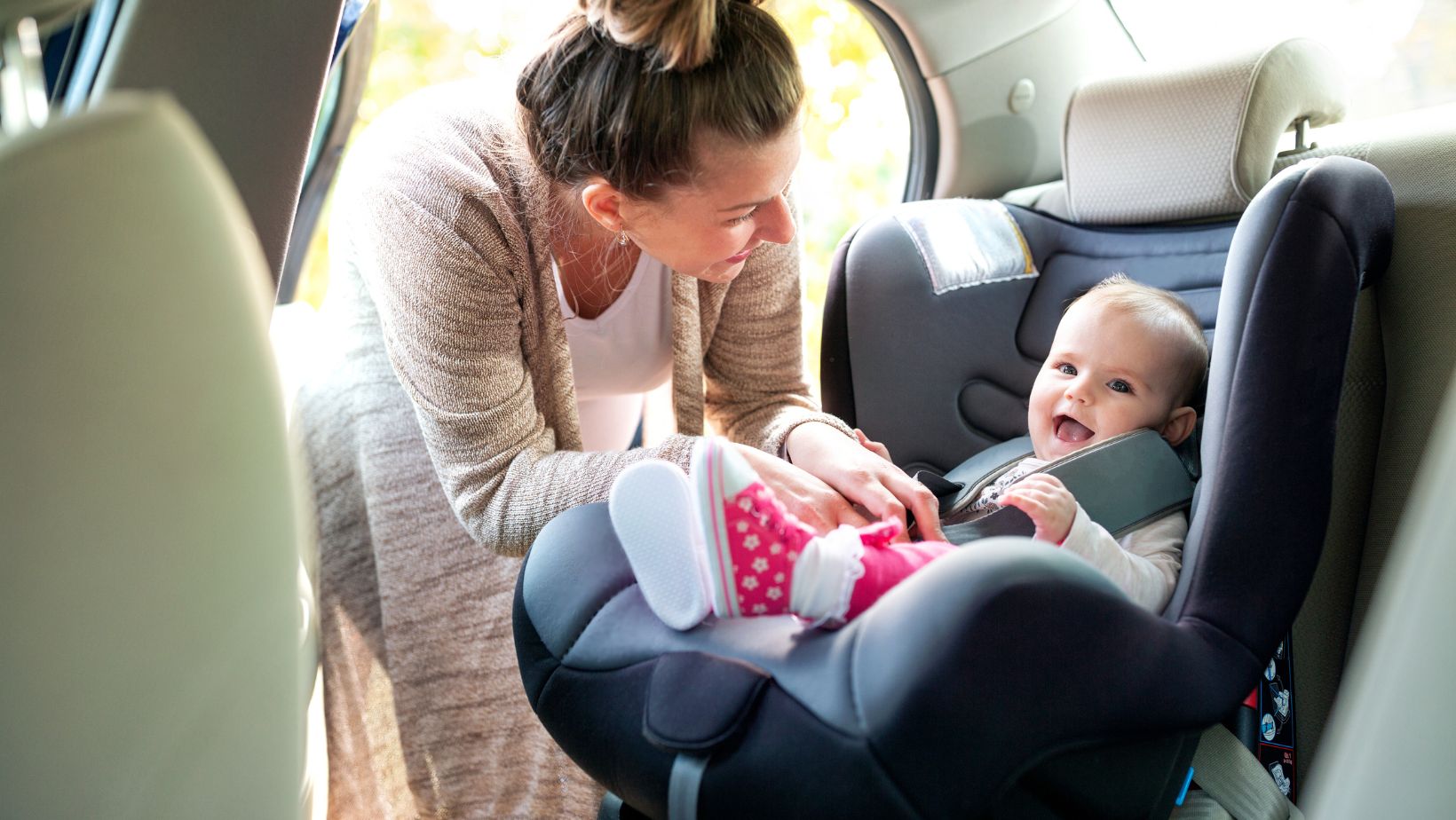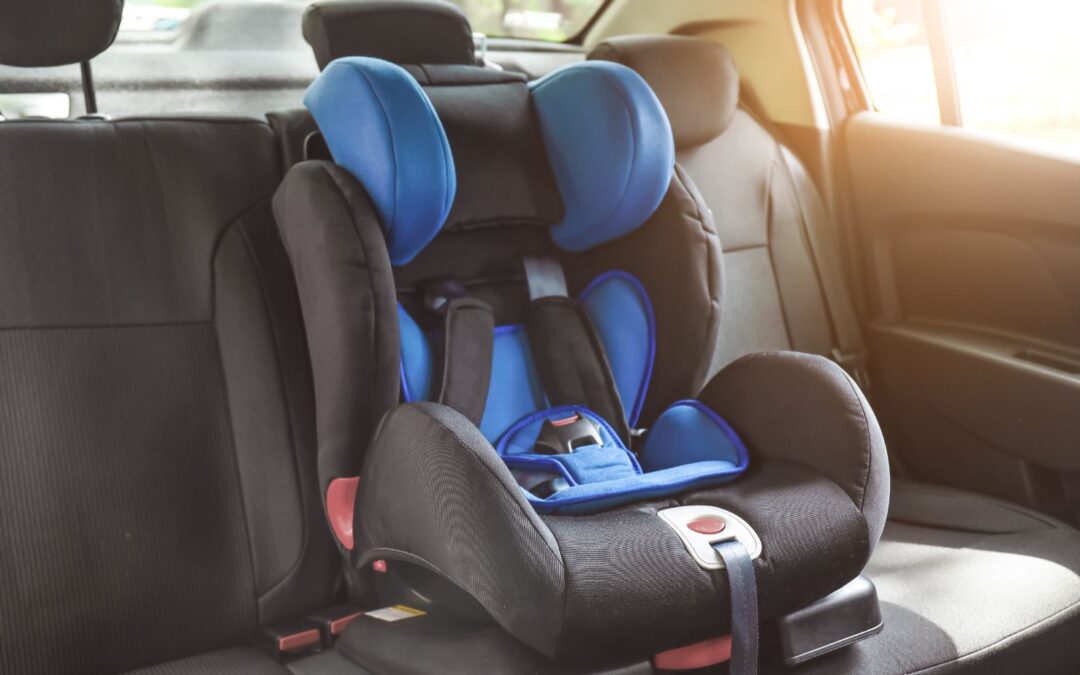Regardless of where you live, you’ve probably seen someone driving with an unrestrained child. Maybe the driver is holding a baby as they try to steer their vehicle, or a toddler is climbing over the seats. You shake your head and wonder if this behavior is safe or even legal.
The answer to both parts of the question is no, and there can also be severe penalties for violating child car safety laws in Texas. Yes, all children riding in vehicles must be properly restrained in a car seat up to a certain age, height, and weight. So, if you’re a new parent, moving to Texas, or are just curious, here’s what everyone should know about the state’s car seat laws.
Texas Car Seat Laws
There’s a good chance your toddler is already asking about riding in the front seat. However, Texas doesn’t allow children in the front passenger seat unless they meet a few requirements. Children must be over 12 years of age. Yes, your child can hop into the front seat after their 12th birthday as long as they meet the state’s height and weight requirements.
Along with being over 12 years old, your child must be at least 4’10” tall and weigh around 80 lbs. If they meet these three requirements, they can legally move to the front seat. Don’t forget about Texas’s seatbelt laws.
The seatbelt law applies to everyone in the vehicle including the driver and all passengers. Failing to buckle up can result in a traffic citation. Who does the seatbelt ticket go to? The answer depends on who isn’t buckled up and the offender’s age.
If the driver isn’t wearing a seatbelt, they get the ticket. The driver also gets a ticket if it’s a minor not wearing their seatbelt. If it’s an adult passenger refusing to buckle up, the ticket typically goes to them. However, sometimes, the driver can also be held responsible.
Potential Penalties for Failing to Use a Car Seat in Texas
Did you know most hospitals won’t allow parents to leave with their newborn if they don’t have a car seat properly installed in their vehicle?

By properly installed, we mean the car seat is buckled into the vehicle’s seatbelt system. If you’re a first-time parent, getting a car seat properly installed can be frustrating. Even if you’ve installed other car seats before, a new model can leave you wondering what you’re doing wrong.
Thankfully, your local fire department is almost always willing to lend a hand. Some even offer car seat installation classes where they walk parents through the steps. If you miss a class don’t worry. Just take your vehicle and car seat to the firehouse.
The staff will install your car seat free of charge and give you some lessons along the way. The hospital staff may also be willing to lend a hand with car seat installation.
So, what are the penalties for not properly installing a car seat? You may face a $250 fine for failing to have a child under the age of 12 belted into a car or booster seat. Once your child outgrows their car seat, most are only rated to support up to 50 lbs; you move onto a booster seat. Remember, your child must meet the height and weight requirements before they can leave either a car or booster seat behind.
Potential Dangers of Not Using a Car Seat
You should know car accidents can happen anywhere and at any time. Even backing out of a parking space at the grocery store can result in an accident. While a vehicle collision at low speeds rarely results in catastrophic injuries, why take the chance with your child’s well-being?
Since most accidents happen on roadways, speeds tend to be greater, which means a higher chance of catastrophic injuries. The decision to not follow Texas car seat laws can result in severe injuries ranging from:
- Traumatic brain injury
- Spinal cord injury with or without paralysis
- Broken bone
- Internal organ and/or other types of soft tissue damage
- Internal bleeding
- Cuts and other lacerations
- Scarring and disfigurement
Fatalities also aren’t uncommon in car accidents—since your child weighs under 80 lbs and isn’t buckled into a car crash, they’re at a greater risk of being tossed around during an accident. This and the force of the collision can result in a fatality.
Mistakes to Avoid with Car Seats
You already know not properly installing the car seat is a common mistake. Thankfully, you have resources like the fire department that can help. Yes, car seats come with instructions, but the directions aren’t always clear. Even instructions with pictures can still be difficult to follow.
Other mistakes to avoid include turning the car seat front-facing too soon. The National Highway Traffic Safety Administration (NHTSA) recommends using a rear-facing car seat until your child is at least one year of age.

If you’re wondering when your toddler can graduate to a booster seat, the recommended age is between 4 and 7 years of age. The goal is to keep your child in a car seat for as long as possible. When your child has reached the car seat’s maximum weight limit, then transition to a booster seat.
The NHTSA also tracks car seat recalls. Yes, car seats are periodically subject to recalls, and it’s something you want to stay on top of. If your car seat is recalled, follow the manufacturer’s instructions. You should receive either a refund or a replacement car seat that meets all federal safety standards.
Some parents understand how uncomfortable shoulder straps can be and let older children opt out of using the safety harness. This is a mistake. Not only is it illegal, children must be properly buckled in, but it’s also dangerous. The waist belt may not be enough to prevent your child from being thrown forward in an accident.
Help Keep Your Children Safe in the Event of a Car Accident
Car seats can indeed be cumbersome for parents to manage and less than popular with older children, making it tempting to forego their use prematurely. However, this temptation should definitely be resisted.
Skipping the car seat too early not only exposes you to the risk of receiving a ticket but, more importantly, puts your child’s safety in jeopardy. Proper use of car seats is important as they are designed to provide the necessary protection for your child in the event of an accident.
Our super author here at Famous Parenting and an absolute wealth of knowledge. She has studied many topics including creative writing, psychology and journalism but her real passion lies in raising her 3 children. Between working from home, homeschooling her youngest 2 children and navigating the world of teenagers she is a guru for parents.





